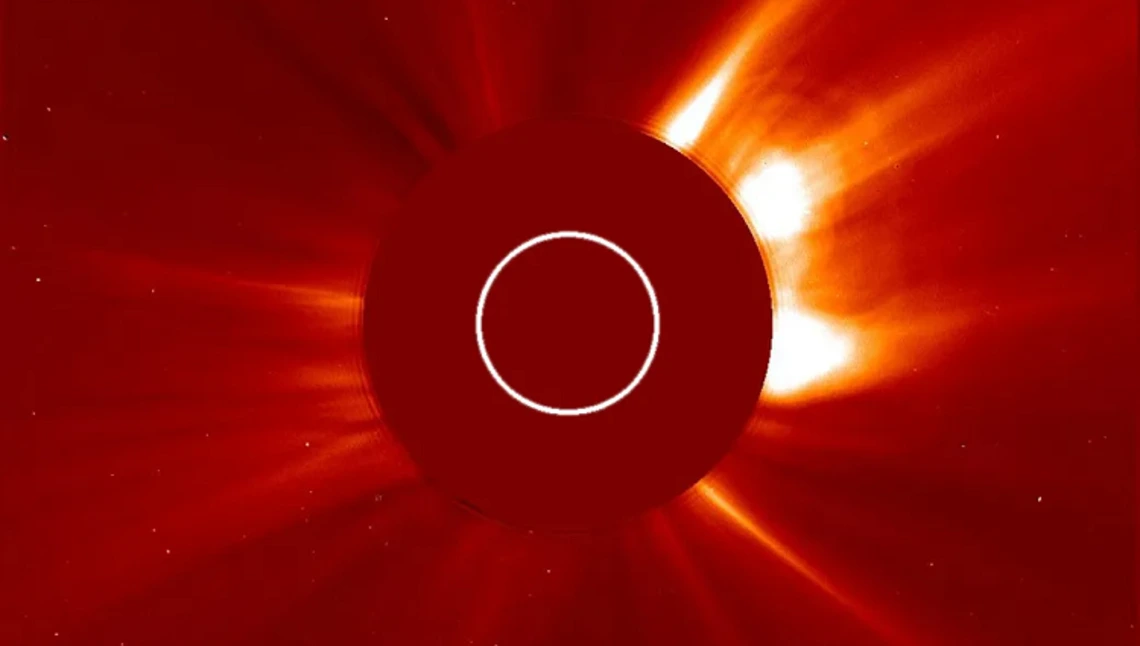Ashok Co-Authors Paper on Exoplanet Detection

A coronagraph from the Solar and Heliospheric Observatory. Photo: NASA / SOHO.
In the search to find other Earth-like exoplanets in the universe, coronagraphs are crucial. These devices block out the direct light from a star in order to see the finer details of its orbiting planets — think of them as solar eclipse glasses for telescopes. Amit Ashok, professor of optical sciences and joint ECE faculty member, recently co-authored a paper detailing quantum techniques that may improve coronagraph capabilities to support the search for Earth-like exoplanets.
According to Phys.org, the team approached their analysis of coronagraphic techniques by considering first the detection step and then the localization task in exoplanet research. They first undertook a hypothesis test to see if it was likely an exoplanet existed. If the prediction played out and an exoplanet was found to exist then the team attempted to estimate its position. Turning to quantum limits for telescopic resolution, they used quantum mechanics to produced a limit of the position of the exoplanet.
The team, which includes faculty from the Wyant College of Optical Sciences, found that eliminating a telescope's optical observations in place of their quantum techniques are crucial in achieving the best chances of detecting an exoplanet.
The paper "Achieving Quantum Limits of Exoplanet Detection and Localization," was published on arXiv.
